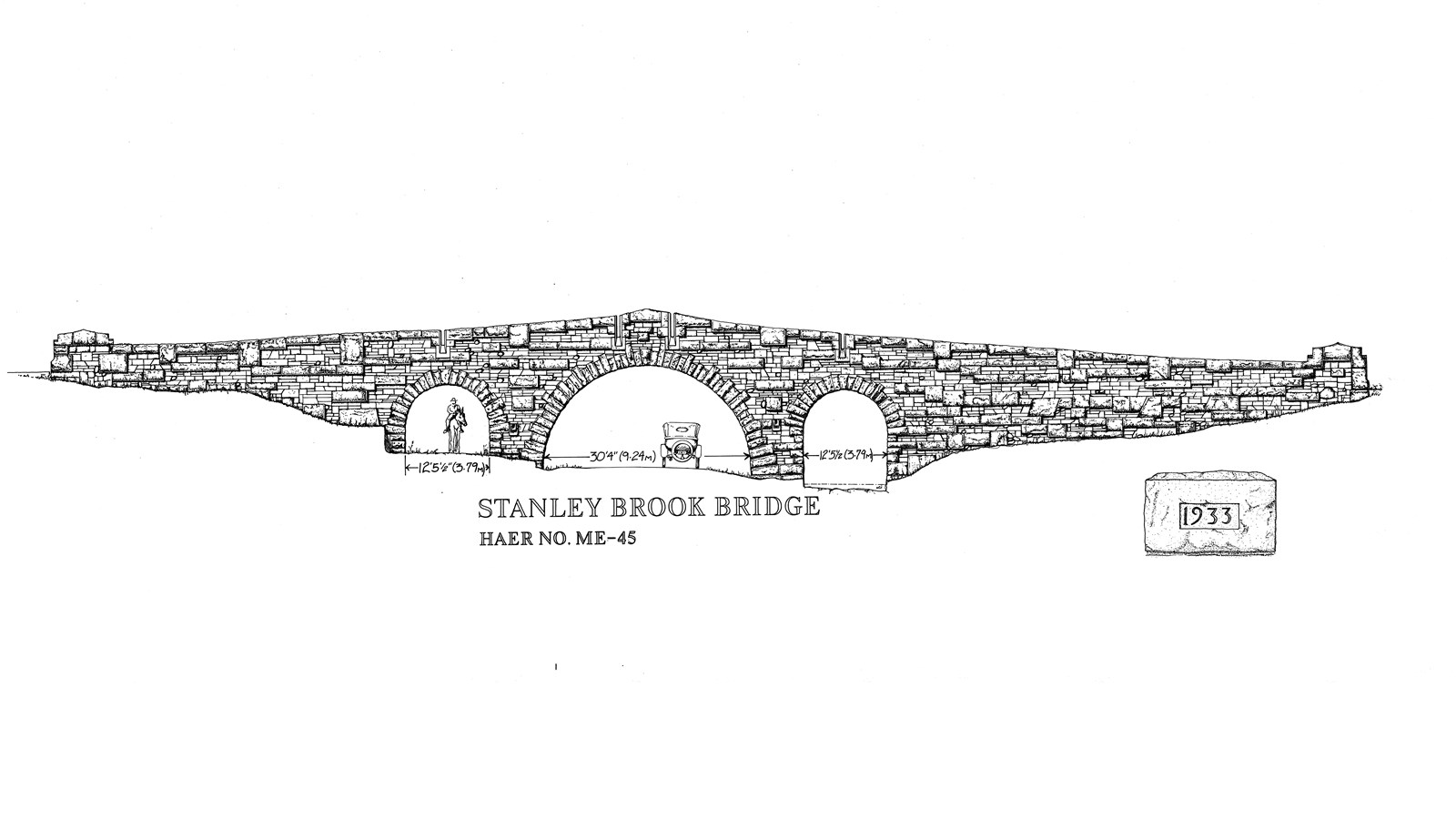Last updated: June 5, 2025
Place
Stanley Brook Bridge (P)

Historic American Engineering Record, National Park Service, Kate E. Curtis, 1994
Scenic View/Photo Spot
Stanley Brook Bridge (1933) was the 16th of 17 bridges constructed along 57 miles of carriage road on Mount Desert Island between 1917 and 1940. It carries the carriage road over the new Stanley Brook motor road as well as the Stanley Brook watercourse and the Seaside Trail. It was the last bridge designed and built by John D. Rockefeller, Jr. on the carriage road system.
Designed by Charles Stoughton and completed by S.F. Ralston, Stanley Brook Bridge is one of the few bridges at which landscape architect Beatrix Farrand’s plantings can still be seen, as much of her work on the carriage roads was destroyed in the Great Fire of 1947. Planting was begun by Mr. Miller, Rockefeller's gardener at his home "The Eyrie" who planted densely a variety of evergreens to block out views of the numerous roads converging at this point. Farrand concentrated on the he decorative plantings directly around the bridge, employing sentinel trees (maples and ashes) at the bases of the piers to frame the arches of the structure. Trees were also used to frame the approaches to the bridge from the carriage road, and also various mainly native shrubs were planted along the road sides to enhance the setting. This planting illustrates Farrand's expert use of the contrast between the naturalistic and formalistic landscape. Visiting the site in 1934, she commented how the plantings had "improved the whole neighborhood."
The triple-arch structure is 180 feet long, and 23 feet at the highest point, constructed of quarry-faced, random-laid ashlar granite over a reinforced-concrete substructure. The facade has random projecting blocks, the arches have slender radiating voussoirs, and the wingwalls have projecting stone scuppers. The parapet walls slope upward toward the crown of the center arch where they form a peak, and are capped with granite capstones and pierced with narrow, beveled embrasures above each arch. The parapet walls terminate in large engaged endposts with stepped sides and peaked capstones. A lookout is incorporated into the north wall at the west end of the bridge.
The bridge was designed by new York Architect Charles W. Stoughton and constructed by Rockefeller's own crews under the direction of S.F. Ralston, superintendent of his Seal Harbor estate, at the cost of $23,928.32. Mr. Rockefeller was very pleased with the completed bridge and plantings stating that it was "interesting to look at and well built."
